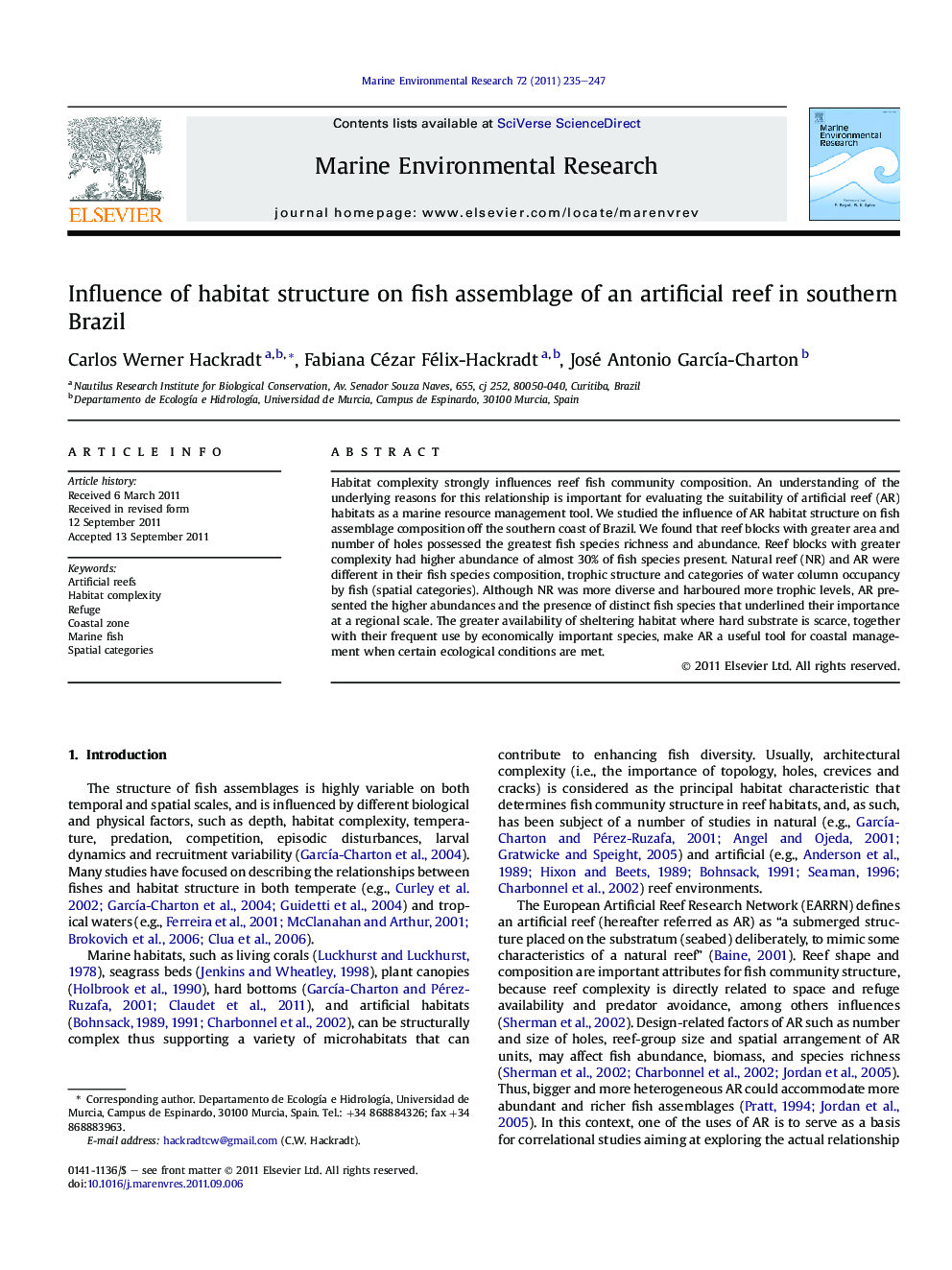| Article ID | Journal | Published Year | Pages | File Type |
|---|---|---|---|---|
| 4551155 | Marine Environmental Research | 2011 | 13 Pages |
Habitat complexity strongly influences reef fish community composition. An understanding of the underlying reasons for this relationship is important for evaluating the suitability of artificial reef (AR) habitats as a marine resource management tool. We studied the influence of AR habitat structure on fish assemblage composition off the southern coast of Brazil. We found that reef blocks with greater area and number of holes possessed the greatest fish species richness and abundance. Reef blocks with greater complexity had higher abundance of almost 30% of fish species present. Natural reef (NR) and AR were different in their fish species composition, trophic structure and categories of water column occupancy by fish (spatial categories). Although NR was more diverse and harboured more trophic levels, AR presented the higher abundances and the presence of distinct fish species that underlined their importance at a regional scale. The greater availability of sheltering habitat where hard substrate is scarce, together with their frequent use by economically important species, make AR a useful tool for coastal management when certain ecological conditions are met.
► Habitat complexity is one of the main factors affecting fish community structure. ► Increasing reef area and holes favour diversity and species number enrichment. ► Particular species may be affected positively by module design characteristics. ► Natural and artificial environments showed distinct fish assemblage composition. ► Paraná artificial reefs may serve as a reliable conservation management tool.
